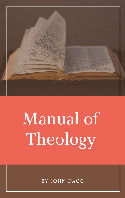RA Torrey The Power of the Blood of Christ
Webmaster
Webmaster: [email protected]
We would like to give a shout-out to our friends at www.monergism.com
Donations: donate to help support this website.
Site Statistics
Total Files for Download: 1601
Total downloads: 2244455Categories
Sidebar Advertisements

Buy me a Cup of Coffee! To make an old Christian work into a PDF, a module for theWord, MySword, or eSword takes time. These works are scans from old books, and as such, I have to go through the text some dozen times looking for places where the OCR is incorrect, blurred, or just skipped something.
Text Editing.Then there are the old Bible references like John iii. 16. Many young Christians and even preachers do not know the Latin system for books of the Bible. I convert Roman numerals in these books to Arabic (iii. to 3).
I have had to invest days and days in writing macros to read a long text, and make substitutions (for the above, search for "iii" and replace with "3:"). Unfortunately, with Psalms you have to start with 150 in Roman numerals (CL) and work your way backwards. But using macros, it is almost instantaneous the next time I need this. Work smarter, not harder. All this takes time and patience, (and being smart enough to do it in a macro language) (as well as a lot of coffee) and then making the text into theWord or eSword, mySword or a PDF.
Please donate something to me once every 6 months or even once a year, even if it is only $5, so that I can pay my bills for hosting, and also keep things moving along. It costs me about $10 per month to keep a website on the Internet. My websites also contains ads which have links to my sermons, tracts, books, that I have written. These keep my works before visitors, even if they are not visiting the specific website where I have them stored. It is my own "web" internally of my own sites with links to good Christian literature. May God bless for your prayers and donations.
Take a look at a few of our tracts:
salv76 suffering should seek his Savior - explains how we should react to problems and sufferings, we should seek the Savior.
pc15 How to fight against depression - we treat the problem of depression. Depression is not a physical disease, it is an emotional and spiritual disease that "bleeds over" and causes aggravation and physical consequences if not attended to at the spiritual-social-emotional level.
ch15 Congregating because we Love - a tract about why we attend church. Our relationship with our brethren in Christ is highly integrated with our salvation and our sanctification.
SSTeen1-01 Existence of God - Does God really exist? This is not a tract but a teen Sunday School Class that I wrote answering this important question.
fam48 Men are God's Agents - Men are God’s Agents to accomplish His Will, looks at man as God wants him to be. Manhood and the husband-wife relationship.
Donations: paypal.me/davidcoxmex/Upcoming Posts
- Collection of docx Sat 4/19/25
- Arthur After the Storm Thu 4/13/17
- Arthur Wordsworth Wreaths of Friendship Fri 4/14/17
- Winslow Christ’s Sympathy to Weary Pilgrims Sat 4/15/17
- Winslow Christ is Ever with You Sun 4/16/17
- Winslow Octavius Lord My Portion Mon 4/17/17
- Winslow Octavius None Like Christ Tue 4/18/17
- Winslow Christ the Theme of the Missionary Wed 4/19/17
Site Archives
These pages are archives of the downloads added to this site, organized by year and month. (Download links included)
2024 12Dec.
More Good Posts

Covetousness is Idolatry an article explaining from the Bible viewpoint how covetousness is a religion unto itself, worshiping money instead of the true God of the Bible. This foundational understanding helps believers to identify the false prophet and reject and flee from their deceptive ministries.
theologicalsystems.com/false-prophet-teacher/covetousness-is-idolatry/-
Recent Posts
Donate
Google Ads
Buy me a Cup of Coffee
David Cox Internet Ministries

David Cox Internet Ministries This post is an update on how our Internet Ministries are moving along, or our reach to the world. It contains some statics for the last 30 days before September 14th, 2023. If you are interested in knowing about our outreach via our Internet websites, please visit this page.
Read the articleFree Books

Dagg Manual of Theology (and links to this work in various other formats).
Dagg Manual of Theology (MySword for Android)
Dagg Manual of Theology (theWord Bible Format)
Dagg Manual of Theology (esword format)
Dagg Manual of Theology (PDF Format)


